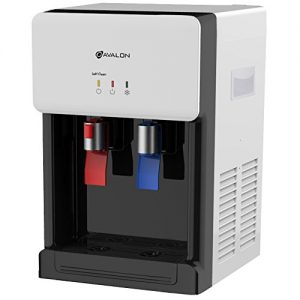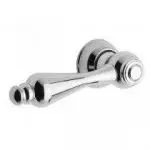What is a Cross-Connection?
 A cross-connection is a point in a plumbing system where the potable (drinking) water supply is or can be connected to a non-potable source (water not intended for drinking). There are two types of cross-connections, direct and indirect. A Direct Cross-Connection is a connection on a potable water system by a non-potable pressurized line such as irrigation lines, boiler lines, chemical transfer lines, etc. An Indirect Cross-Connection is a connection on a potable water system by a line, or hose, and is usually open at one end. Examples of Indirect Cross-Connections are garden hoses, sprinkler systems, water softeners, bathtubs, showers, wash basins, etc. Some examples of Indirect Cross-Connections made with a garden hose are:
A cross-connection is a point in a plumbing system where the potable (drinking) water supply is or can be connected to a non-potable source (water not intended for drinking). There are two types of cross-connections, direct and indirect. A Direct Cross-Connection is a connection on a potable water system by a non-potable pressurized line such as irrigation lines, boiler lines, chemical transfer lines, etc. An Indirect Cross-Connection is a connection on a potable water system by a line, or hose, and is usually open at one end. Examples of Indirect Cross-Connections are garden hoses, sprinkler systems, water softeners, bathtubs, showers, wash basins, etc. Some examples of Indirect Cross-Connections made with a garden hose are:
- A garden hose attached to a pesticide/chemical spray bottle.
- A garden hose filling a pool with the downstream end of the hose being submerged by the non-potable water.
What is a Backflow?
 “Backflow” means the undesirable reversal of flow of water or other substances. This is through a cross connection into the public water system or consumer’s potable water system.
Backflow is the flow of water (or other solid, liquid, or gas from any source) back into the potable water supply. Backflow may be due to either: Backsiphonage; or Backpressure.
“Backsiphonage” means backflow due to a reduction in system pressure in the purveyor’s distribution system and/or consumer’s water system. “Backpressure” means a pressure (caused by a pump, elevated tank or piping, boiler, or other means) on the consumer’s side of the service connection that is greater than the pressure provided by the public water system and which may cause backflow.
“Backflow” means the undesirable reversal of flow of water or other substances. This is through a cross connection into the public water system or consumer’s potable water system.
Backflow is the flow of water (or other solid, liquid, or gas from any source) back into the potable water supply. Backflow may be due to either: Backsiphonage; or Backpressure.
“Backsiphonage” means backflow due to a reduction in system pressure in the purveyor’s distribution system and/or consumer’s water system. “Backpressure” means a pressure (caused by a pump, elevated tank or piping, boiler, or other means) on the consumer’s side of the service connection that is greater than the pressure provided by the public water system and which may cause backflow.
Causes of Backflow
Causes of Backflow: Backsiphonage Backsiphonage is backflow caused by a negative pressure (vacuum or partial vacuum) in the supply piping. Backsiphonage occurs when system pressure is reduced below atmospheric pressure. The effect is similar to sipping water through a straw.
The following scenario illustrates how back siphonage backflow conditions could occur in a public water system:
Backsiphonage is backflow caused by a negative pressure (vacuum or partial vacuum) in the supply piping. Backsiphonage occurs when system pressure is reduced below atmospheric pressure. The effect is similar to sipping water through a straw.
The following scenario illustrates how back siphonage backflow conditions could occur in a public water system:
- A public water system main is shut off to repair a leak. The water main is at the base of a hill.
- The water main is at a lower elevation than the homes on the hill. This creates a situation where water in the plumbing in the homes on the hill can drain into the public water system main.
- When a customer at the bottom of the hill uses water, a siphon is created at households at the top of the hill and water drains out of their plumbing systems.
- At one household at the top of the hill, a garden hose is being used to fill a child’s wading pool. The hose is submerged in the pool.
- When the backflow conditions occur, the non-potable water from the wading pool is siphoned through the cross-connection (submerged hose) into the household plumbing and then into the water main.
- The water from the wading pool contaminates the water main.
- When water service is restored, contaminated water is delivered to customers served by the public water system.
Causes of Backflow: Backpressure
 Backpressure is backflow caused by pressure in the customer’s plumbing being greater than the pressure in the water supply piping. The higher pressure in the customer’s plumbing may be from a booster pump, heating boiler, etc. The following scenario illustrates how backpressure backflow could occur in a water system:
Backpressure is backflow caused by pressure in the customer’s plumbing being greater than the pressure in the water supply piping. The higher pressure in the customer’s plumbing may be from a booster pump, heating boiler, etc. The following scenario illustrates how backpressure backflow could occur in a water system:
- The fire department withdraws water from a hydrant. This reduces the pressure in the public water system main from 50 pounds per square inch (psi) to 20 psi.
- A customer served by the public water system installed a lawn irrigation system. The customer’s irrigation system is supplied with water from a pond. The pump supplying the irrigation system operates at 30 psi. To ensure a supply for the irrigation system when the pond is dry, the customer installed a standby connection to the household plumbing (potable water piping).
- On the day of the fire flow situation, the normally closed valve between the household plumbing and irrigation piping is accidentally left open.
- Backflow wouldn’t normally occur at this customer’s connection because the pressure in the public water system is greater than the pressure supplied by the irrigation pump. However, during the fire flow situation, the pressure from the irrigation pump is greater than the pressure in the water main. Water from the pond is pumped into the household plumbing, and then into the public water system main.
- When the fire flow ends, the pressure in the public water system water main increases and contaminated water is delivered to customers served by the system.
How do you prevent Cross-Connections?
- Be aware of and eliminate Cross-Connections.
- Install approved Backflow assemblies, devices, or air gaps on any system that contains contaminated water.
- Install hose bib vacuum breakers on water fixtures. Without proper protection, something as useful as your garden hose has the potential to contaminate your home’s water supply. In fact, according to the American Backflow Prevention Association, over half of the nation’s Cross-Connections involve unprotected garden hoses.
Methods of Backflow Prevention
 Backflow can be prevented in two ways, either through the installation of:
Backflow can be prevented in two ways, either through the installation of:
- An approved air gap (AG) that provides a physical separation between the contaminant and the drinking water supply; or
- Mechanical devices or assemblies that prevent backflow from occurring.
Mechanical devices or assemblies
 In addition to AGs, there are several methods of preventing
backflow by mechanical means. These range from simple single check valves to elaborate approved backflow prevention assemblies. All mechanical devices and assemblies will prevent backflow to some degree when properly installed and maintained. However, not all mechanical devices and assemblies are created equal. Thus, not all mechanical devices and assemblies provide equivalent backflow protection.
In addition to AGs, there are several methods of preventing
backflow by mechanical means. These range from simple single check valves to elaborate approved backflow prevention assemblies. All mechanical devices and assemblies will prevent backflow to some degree when properly installed and maintained. However, not all mechanical devices and assemblies are created equal. Thus, not all mechanical devices and assemblies provide equivalent backflow protection.
 Regarding backflow application conditions, some devices and assemblies are designed to prevent back siphonage backflow only. These are not effective in preventing backflow under backpressure conditions.
Others are designed to prevent both back-siphonage and backpressure backflow. When selecting a backflow preventer to protect the public water system, the purveyor must make sure that the preventer is suitable for the backflow application conditions likely to occur for a particular connection (or fixture).
Backflow preventers must also be commensurate with the degree of health hazard (high vs. low) posed by the customer’s plumbing system (or fixture) to the public water system. For example, some backflow preventers (i.e., assemblies) are manufactured to a very high standard, and thus, are more reliable in preventing backflow than devices manufactured to a lower standard. The more reliable assemblies must be used to prevent backflow in high hazard cross-connection situations.
Regarding backflow application conditions, some devices and assemblies are designed to prevent back siphonage backflow only. These are not effective in preventing backflow under backpressure conditions.
Others are designed to prevent both back-siphonage and backpressure backflow. When selecting a backflow preventer to protect the public water system, the purveyor must make sure that the preventer is suitable for the backflow application conditions likely to occur for a particular connection (or fixture).
Backflow preventers must also be commensurate with the degree of health hazard (high vs. low) posed by the customer’s plumbing system (or fixture) to the public water system. For example, some backflow preventers (i.e., assemblies) are manufactured to a very high standard, and thus, are more reliable in preventing backflow than devices manufactured to a lower standard. The more reliable assemblies must be used to prevent backflow in high hazard cross-connection situations.
Backflow Preventers
Regarding backflow preventer design, an important difference between various types of backflow preventers is whether the design allows them to be tested and repaired while in-line. The purpose of the testing is to determine whether they are properly functioning to prevent backflow. Preventers that are not testable are called devices, whereas assemblies are preventers designed for in-line testing and repair. Assemblies include isolating valves and test cocks. The last difference between the various types of backflow preventers is whether they can be used to isolate the customer’s plumbing from the public water system distribution system. This concept is called premises isolation. Premises isolation assemblies are usually located at the meter or property line. Some assemblies can be used for premises isolation, whereas others are used to prevent backflow at fixtures only. The concept of installing a backflow preventer at a particular fixture, such as a boiler, is called fixture protection. When selecting a backflow preventer for a specific situation, it is important to consider whether the preventer is to be used for premises isolation or fixture protection.
Office Hours
Monday – Friday 7:30 AM – 4:30 PM
Closed – Saturday and Sunday
Emergency Service 24/7
Certifications
WI MP #674250
IL MP #058-192451
Designer of Engineering
Systems #1949-7
Cross Connection #674250
IL Contractor #055-043916
Site Powered by SR Computer Support – all rights reserved – Trademarks and brands are the property of their respective owners.

